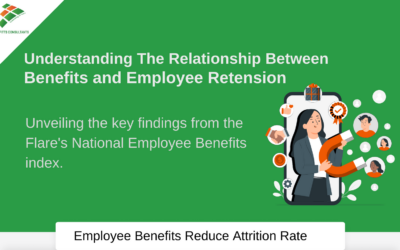Contents
Feedback is one of the ‘hot’ topics in business today in every industry.
In a workforce that is increasingly dominated by Millennials, we are led to believe they want more feedback than any previous generation. As a result, some organisations are both creating feedback cultures and introducing peer to peer feedback.
It is with interest then that I read an article in Harvard Business Review questioning the value of feedback as we know it.
In this article, I want to explore some of the reasons why feedback doesn’t always work as well as we want it to and what you can do differently.
What Stops Feedback From Working As Well As You Want?
1. A Managers Area Of Focus

Too often it’s easier to identify what isn’t working than what is.
Let’s be honest; many high achievers find it easier to generate a list of what their development needs are than what their fundamental strengths are. Similarly, this behavioural pattern is then repeated when a manager is observing or reviewing a team member’s performance too.
Likewise, I have often heard managers talk about how little motivational feedback they received at different stages in their career. As a result, two things can happen:
a) They didn’t give motivational feedback as they’re not accustomed to its benefits.
b) Managers praise too much and offer too little development feedback.
2. Lack Of Capability
I was talking with a colleague recently who said they had been managing for five years before they went on a formal management training programme. Luckily, they had a good role model who had highly advanced coaching skills.
Her peer group, however, sadly were not quite so fortunate and as a result, were somewhat clumsy in giving feedback and in some instances would avoid it altogether, mainly if they were concerned about upsetting their team member.
The consequence, unfortunately, is that no-one knows where they’re going wrong, how their performance could improve, or what they are doing well.
3. Timeliness Of Feedback
If you are having monthly one to ones with your team and using this as your opportunity to share feedback, it will have less impact. Not only will your recollection of the detail of a situation have dimmed in your own mind, but also in your employee’s.
The impact is that the conversation will have less value. Which also leads me to my next point.
4. The Quality Of A Manager’s Feedback.

If we haven’t used the following statement ourselves at some point in our career, we will have had it said to us…….. Good Job!
I don’t know about you and the first thing that comes to my mind when I hear this is, ‘OK, so what did I do that you liked?’
If an employee lacks the specifics of a behaviour or action that they can identify that they did well or could improve then how can they repeat it again?
What You Can Do Differently
Let me be blunt about this. Stop using phrases such as:
“You need to improve …”
“You should do…”
Instead use:
Here’s what I would do… or
Here’s what worked best for me and why …
These two phrases remove the implied judgement of the words ‘need’ and ‘should’. When I hear these two words, I find the voice in my head saying…and what if I don’t do it?!
Share Specific Positive Behavioural Examples
Use specific behavioural examples where you share not only what the person did well, but the outcome and how it made you feel. Yes, you did read that correctly, share how it made you feel.
Maybe you heard one of your team handle a challenging conversation with a client, who they moved from anger to calm in a matter of minutes.
Take a moment and stop to highlight the specifics of what you heard and saw and how proud you felt about the way they handled it. Let the individual know this is the specific behaviour you are looking for each day.
Important: Share Only What You Have Observed.
Focus on what you have personally observed and stay away from what others have said. If a colleague has brought something to your attention, encourage them to share the behaviour, outcome and how they felt.
Use An Employee’s Past Experiences To Help Them In The Present And Future

Marcus Buckingham, the author of the HBR article I mentioned earlier, suggests a practical approach where employees use their own experiences and resources to overcome problems and challenges.
When an employee has a problem, he suggests that managers ask their team member to focus on three things that are currently working well for them (present). This question shifts the individual’s mindset into a positive, resourceful state.
The next step is to say, ‘When you have had similar problems to your current one previously, how did you handle it?’ (past).
The employee generally has several examples they can relate. The final ‘future’ step is to ask, ‘what do you already know that can work in this situation?’ (back to the present).
While you may find some of these ideas a little different, how well is your current approach to feedback working for you? If you are unsure, test the new methods for yourself and notice the difference.
It is both easy and rewarding to learn different strategies to develop your team in a way that motivates, encourages, and guides them towards higher levels of performance and excellence.
Thanks,
Amrutha
About JobFitts
JobFitts Consultants are a specialist provider of professional Recruitment Services for the Financial Services sector and related suppliers in Australia. Since 2003 we have recruited and placed a breadth of operational roles at all levels from HR, Accounting, Marketing and Customer Service/Frontline.
To find out more visit our website at JobFitts here or call us on (02) 9220 3595 or email here.











Share This
Share this post with your friends!